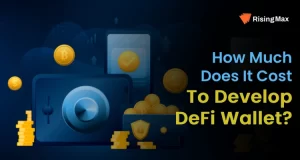Software development is a standard process for every organization. No matter what projects or kind of industry your organization belongs to, providing your customers the best and quality product at the end is the ultimate goal of every organization. Thereby, when it comes to software, the same rules imply it.
This is because customers are more concerned about the quality of things nowadays. Thus as a business owner, you cannot put them off by providing bug-filled apps and other platforms. So, to satisfy the customers, the most profound organizations have made software testing necessary, increasing the need for STLC Phases In Software Testing.
Since we know software development is not easy and requires many phases and implementation to deliver perfect software, it is essential to test them. Testing software helps eradicate bugs and other problems within the software, making it user-friendly for your customers.
Earlier software testing was unnecessary, but the increased reports of bugs and problems in software have increased the importance of STLC phases in software testing for custom software development company across the world. So if you own a business and look to have software development, you can’t overlook the STLC Phases in Software Testing. Keep reading to know about it in brief.
What Is the Software Testing Life Cycle (STLC)?
Before we dwell on the (Software Testing Life Cycle) STLC phases in software testing, let’s know what exactly STLC is. The software testing life cycle is the series of steps, and planning done within testing of the software. It is a kind of flow that checks the software and is done in the form of stages.
This cycle is performed to bring the quality strategy that can help to produce the desired outcomes. Like in a normal life cycle where different steps are followed in sequence to complete a task the same in STLC, different phases go through a series of changes from start to finish within the software development testing.
Characteristics of STLC Phases in Software Testing
Software testing life cycle is one of the popular methods of testing the software to check its viability, quality, and the extent to which it is perfect. If you are still pondering over whether to opt for STLC phases in software testing or not, here are some unique characteristics of STLC that you must know. Let’s explore them one by one!
- STLC is a fundamental component of SDCL that is a software development life cycle consisting of the testing phases to test the developed software.
- STLC phases in software testing only start after in a development process all the requirements and analysis are being made by the software developers.
- The best thing about STLC is that it includes a step-wise process that ensures the product’s quality is at its peak. As with step-wise procedure, one can make the desired changes in the development and get a perfect product at the end.
- This software testing process takes less time as when software is being developed, the testing team analyzes it, defines the scope to which testing is done, and analyses the entry and exit criteria, which reduces the time as all the things are done prior.
- The STLC testing is done in priority from the development phase, making it an excellent way for developers to detect the bugs at the earliest and rectify them as soon as possible.
STLC Phases in Software Testing That You Must Be Aware Of
Verifying every phase and testing every software module is a must to ensure that the software developed is good to go. Since software testing itself is a perfect process to analyze the software compatibility. And opting for STLC Phases in Software Testing makes software development more perfect.
Every phase of STLC has its importance and provides desired results. One cannot skip any of the phases of STLC to make software testing successful. Let’s know about the STLC Phases in Software Testing that software developers follow.
Phase 1: Requirement Analysis
The first phase is requirement analysis, where before the testing, developers must view, study and analyze the specifications and requirements. It is done so that one can produce desired outcomes accordingly. In this phase, the software testers analyze both functional and non-functional requirements together.
The activities used by testers within this phase are brainstorming, picking manual and automated testing, surfing specific details. This phase generates the feasibility of the software on the details that are accumulated.
Key Points of this Phase
- Understand the output that can be expected from the product
- Identify the loopholes in the requirements
- Collect priorities of the requirements
- Helps to perform the automatic feasibility checks
Phase 2: Test Planning
The second phase includes the planning of the test. In this team, the tester team comes together, builds a plan after analyzing the requirements, and tests accordingly. This phase outlines the scope and objective of the software development product domain.
They want to test whether different risks are involved within the product and define the different time schedules to build a testing strategy for the app. After that, the team management analyzes the tools required and finalizes the testing responsibility to other individuals’ devices, and assigns roles and responsibilities to individuals.
Key Points of this Phase
- Preparation of the test documentation for further analysis
- Estimation of time and efforts required for testing
- Finalizing the tools and strategy needed in test planning
- Assigning tasks to other team individuals
- Identify the requirement of training
Phase 3: Test Case Designing and Development
After development and planning, the next testing phase through STLC is to design and develop the test cases accordingly. The test cases designed need to be extensive and should cover every aspect. In this phase, permutation and combinations within the testing of the software are calculated.
This is done to analyze and prioritize the test cases to know which test cases will affect the product the most. Also, the next thing that comes within this phase is the verification of the requirements again.
The automated scripts prepared at earlier phases are reviewed, updated, and approved in this phase. The phase comprises defining the different test conditions based on the input data and expected outcomes.
Key Points of this Phase
- Researching and gathering the actions to be held within the project
- Creating test cases
- Prioritizing test cases according to permutations and combinations
- Preparing automated scripts by updating and reviewing them
- Defining test case conditions
Phase 4: Setting Up Test Environment
This is one of the other STLC phases in software testing. Testing activities are based on environmental factors such as servers, frameworks, hardware, software, and test data setup, helping execute developed test cases.
The main components of this phase are configuring hardware and testing data setup. Moreover, it is critical to take smoke tests and equipping testers with all the bug reporting tools.
In this, the working of things in different environments is being checked. For example, some features will work on google chrome but not on internet explorer. And this phase tests why it’s happening and fits the environmental factor.
Key Points of this Phase
- Understanding the minimum requirements of hardware and software
- Listing down all the needs based on the different performance
- Prioritizing the test environments
- Setting up the testing environments according to software
- Smoke testing the already built environments within the software testing
Phase 5: Test Execution
The second last phase of STLC is test execution, where the application is ready to test once again after the testing team is done with all the above phases. In this phase, the team identifies, detects, logs defects, and reports bugs within the testing phase.
The team also starts comparing expected results with the real outcome of the product. If there are any errors or bugs within it, the team removes all the bugs and errors to make it perfect. After the fixing of bugs is done, the testing of the complete product is carried out again.
Since the bug reporting and testing are done, again and again, it is preferred to use scripts or automated testing tools to test the product. And many of the products within this phase are tested using testing tools.
Key Points of this Phase
- This phase is based on running a different kinds of test cases
- Identification of expected results from the real product results
- Log failed cases with detailing
- Identification and fixing of bugs and errors
- Testing is done several times to make sure everything is done perfectly
Phase 6: Test Closure
And finally, the last phase of this software testing method is test closure. The end of the test execution phase marks the beginning of the test closure phase. In this phase, the testing team checks the test results and discusses them with other team members. In this product, quality, test coverage, and project software development cost breakdown of the software product are being checked.
This is done to analyze the deviation of the results. In case of any issues they come across in this phase, the discussion of the testing team is carried under this phase. After that, the report is being made and sent to developers for changes in the product.
Key Points of this Phase
- The testing team verifies that all the tests are done or not.
- Evaluating the significant factors like quality, test coverage, timeline, and cost.
- Prepare a report of the conclusion in the end
- Discussing the flaws and issues within the project
- Preparing a test closure report to provide it to the developing team for the changes
What are the Entry and Exit Criteria for STLC Phases in Software Testing?
The above all six STLC phases in software testing have their extreme and exit aspects associated with them. For the testing team, it is essential to finish the execution of test cases within a fixed time and maintain the quality, functionality, and efficiency of the software product.
And for doing that, it is necessary to define the entry and exit area within the phases. If you are testing the software then knowing this entry and exit criteria is a must. Let’s know what the entry and exit area is in more detail.
Entry Criteria
Entry criteria are the states where the testing team has to take all the requirements before the testing procedure to make sure everything is done correctly. It is mandatory to cross-check all the essentials to ensure everything is done according to the clients.
In this, there are some activities that testing needs to take into consideration before testing begins. From taking input from the development team, you also need to examine the test plan, test cases and data, the testing environment, and your code for what is done within the testing.
Exit Criteria
Exit criteria represent the requirements and actions that need to be completed before testing a software product. It includes all the tools needed to cross off the task list and processes to avoid being stuck on testing. This criteria also consists of identifying all the defects and eliminating them before they cause any issues. With this it let software testing team to report all the issues to the developer team to make the best possible thing at the end.
Summing Up
Testing has become an essential part of the development process, helping businesses and organizations to offer bug-free platforms, apps, and websites to their customers. This is the reason people are thinking and spending more on software testing once they are built. If you are looking for the same, RisingMax is your ideal IT consulting companies in NYC to visit. Whether mobile app developments, software, or web developers, we got you covered everything needed to bring the businesses at the forefront in this competitive world.
Our team is well aware of all the trends, updates, and technology that can help you revamp your services and improve your customers’ experiences. In case of any query, we are available round the clock to help you. Feel free to contact us anytime for your queries!











